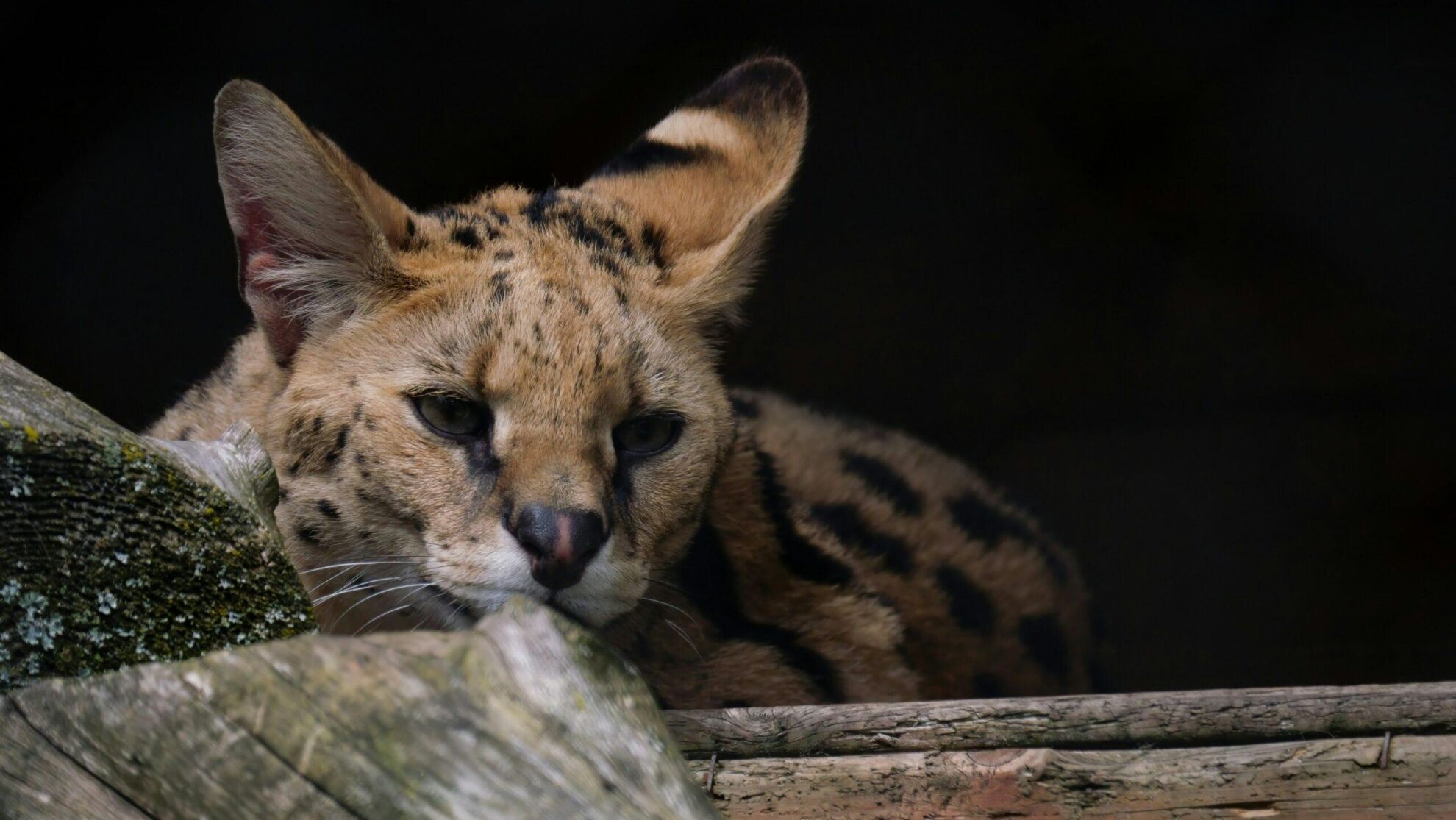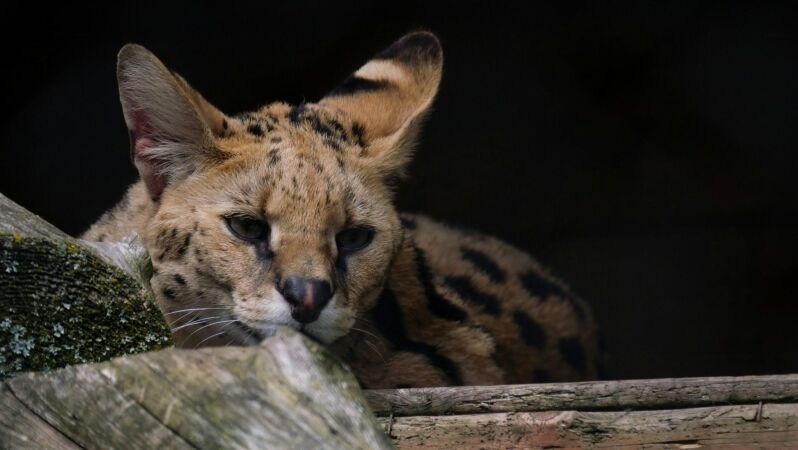

Serval hunting as part of a game hunting safari needs to be planned in advance to allow for the allocation of a special permit. In South Africa, the serval is found in parts of the Northern Province, Mpumalanga, KwaZulu-Natal Drakensberg and in Lesotho. Its conservation status is listed by the IUCN, as “least concern.”
Servals (Leptailurus serval), also known as a “tierboskat” (tiger bush cat) in the local Afrikaans language, are commonly found on savannas where there is plenty of water. They prefer areas comprising bush, tall grass, and dry reed beds near streams. They also live in high-altitude moorlands and bamboo thickets.
When hunting, a serval’s long legs come into play as they reach up to 50 miles per hour on a hunt! Their hearing is exceptional, allowing them to hear prey burrowing underground. Their diet consists of rodents, birds, rabbits, and reptiles, with small prey eaten whole.
Name:
Leptailurus Serval
Male Weight:
20-40 pounds
Male Shoulder Height:
21-26 inches
Range:
Mainly Southern Africa, Rare in Northern Africa
Habitat:
Savannas and Grasslands Near Water
Mating Season:
All year around
Life span:
10 years
Hunting the Serval in Africa is Tricky as it Requires a Special Permit
The Serval is a medium-sized, slender feline with a small head and large ears. Its coat is a golden yellow, with black spots and stripes, and has a white underbelly. The serval has a short, black-tipped tail and the longest legs of any cat relative to its body size. Their extra-long neck and legs give them the nickname "giraffe cat.” Their long legs are handy when hunting, as they can jump up to 12 feet straight into the air from a sitting position to catch birds. These long legs also assist them in running away and evading predators such as leopards. These cats are able to swim and climb but rarely partake in these activities, preferring to stalk their prey on the ground.
During a game hunting safari for serval, still hunting is one of the methods used. Serval usually ventures out into cleared fields, looking for prey such as mice in the crops, and with the cleared area, they are usually easier to spot and target. A hunting safari in South Africa also allows the hunter to utilize a spotlight and to hunt serval at night, provided the hunter has a night hunting permit. Hounds are also allowed to be used to hunt serval in South Africa. Both Namibia and Tanzania do not allow the hunting of serval with hounds. Zimbabwe, Tanzania, Botswana, Burkina Faso, and Ethiopia also allow hunting serval in Africa. However, you are required to purchase the permit in advance.
A challenge of serval hunting in Africa is that it takes planning due to the permits needed to hunt them in many African countries. This intelligent feline can be aggressive when defending itself against predators or guarding its prey and remains a good trophy option to represent African wild cats. The opportunity to hunt serval at night during the hunting safari also allows hunters to experience night hunting in Africa, which may be a first for many and a great game hunting reward.
Any rifle in the .22 caliber centrefire will be ideal for serval hunting. Use solid bullets. Shots will be in the short to medium range in closed thickets. Any 30 caliber and above with heavier bullets with high velocities can ruin your serval trophy.
Search from our range of Hunts across various popular destinations in Africa.
Find A Hunt